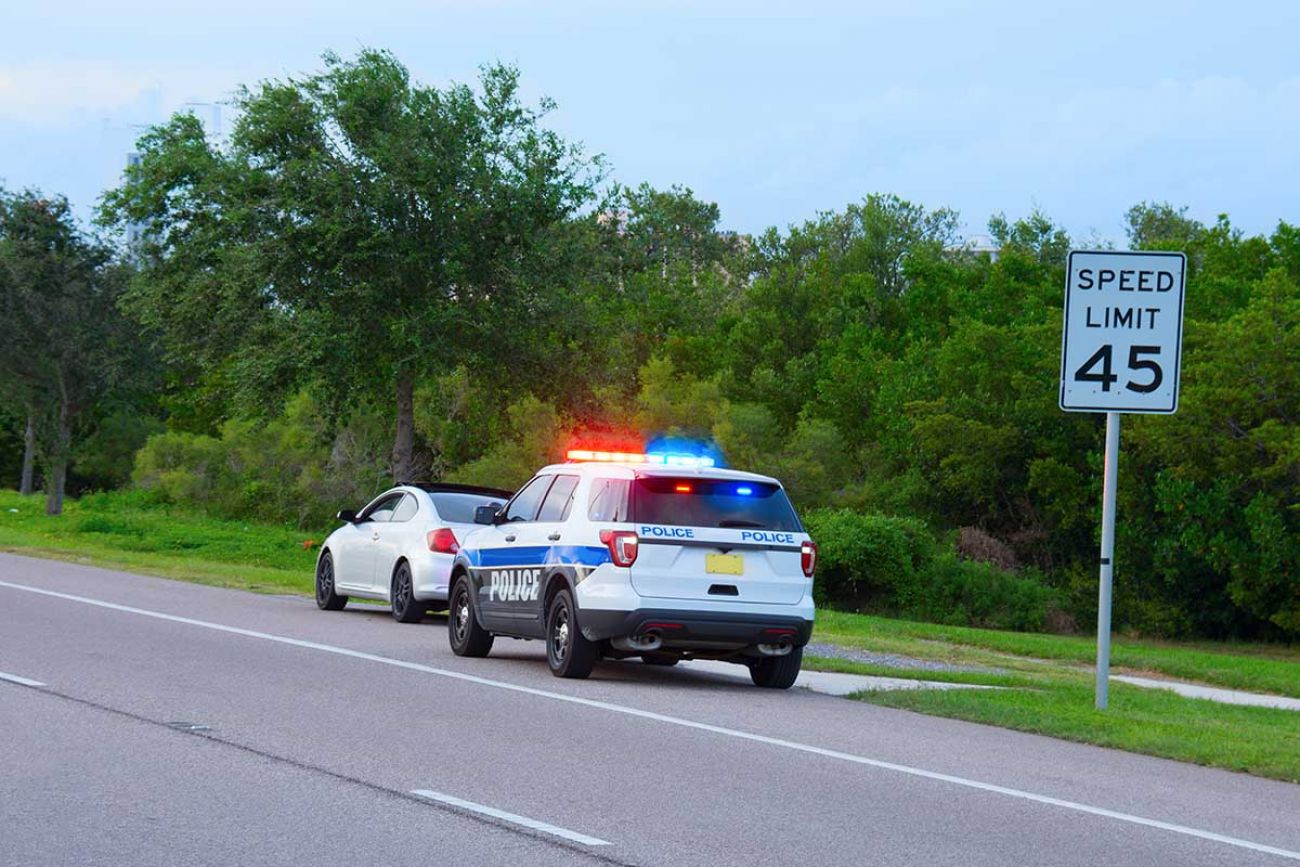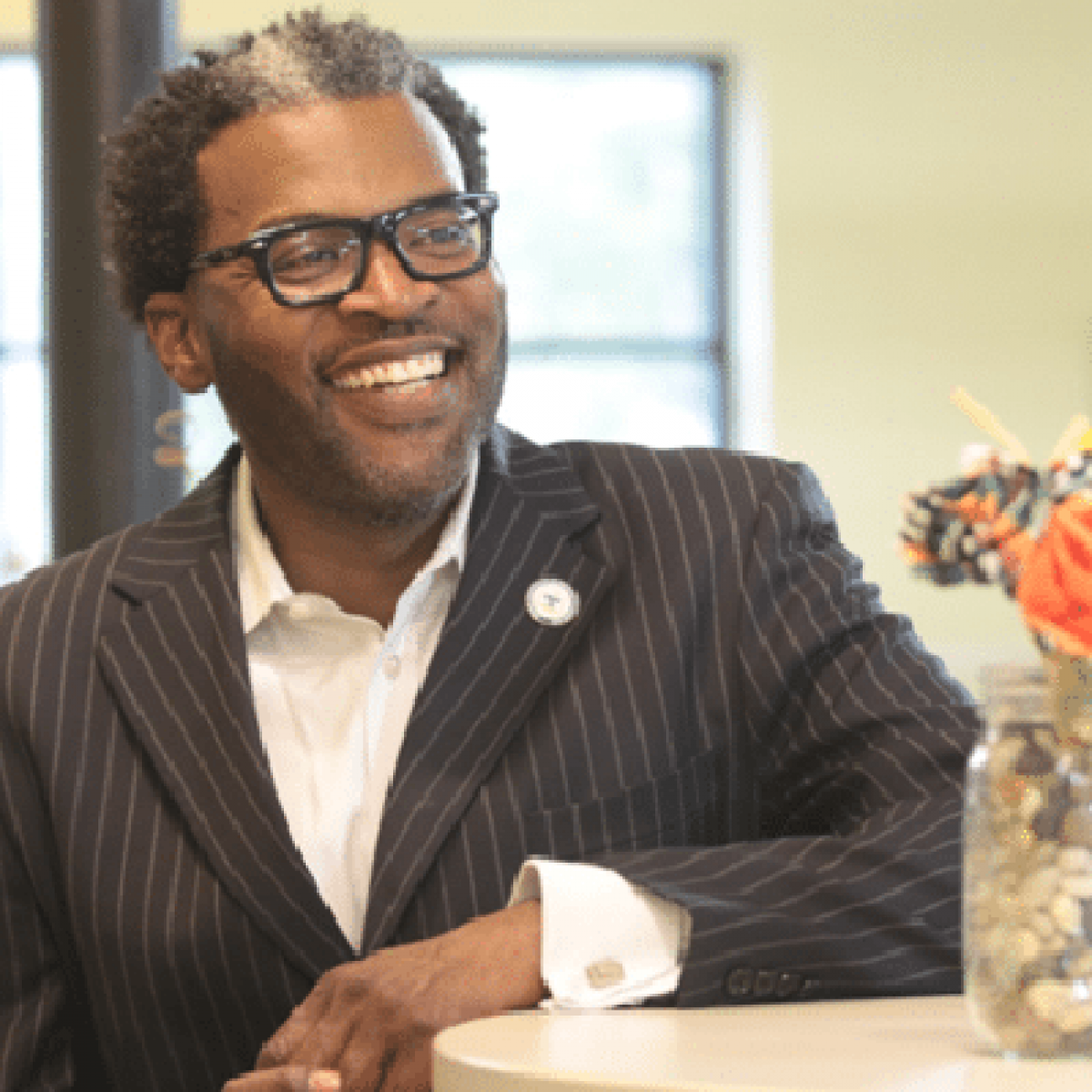Some police traffic stops end violently. Is there a better way?

Just over two years ago, Black motorist Thurman King was headed toward home in the city of Rockford, a largely white community north of Grand Rapids.
What happened next, according to a federal lawsuit, could be seen as an example of how a routine traffic stop can go wrong — especially for people of color. After being accused of rolling his car through a stop sign and having a faulty driver’s plate light, King found himself thrown to the ground, accused of resisting arrest and taken to jail. The charges were later dropped after a review of police dashcam video, the suit said.
It’s a story familiar to many in Black communities, where young drivers are instructed by their parents on what to do — and not do — to reduce the possibility of violence if police stop them, even on a minor infraction; a phenomenon sardonically referred to as Driving While Black.
Related:
- Arrests, privacy concerns mark first month of ShotSpotter’s use in Detroit
- Michigan hails Chauvin conviction as ‘a victory for Black and brown lives’
- Michigan hasn’t passed any police reforms since George Floyd’s death
- ‘Dehumanized’ by police at 16, Garlin Gilchrist seeks Michigan reforms
- Defund police or reform? What a city in Oregon can teach Michigan
- Michigan moves to allow first-time drunk drivers to expunge conviction
- Whitmer signs Clean Slate Michigan, allowing automatic felony expungement
Such incidents are again drawing protest after two violent episodes following traffic stops. In suburban Minneapolis, not far from where George Floyd was killed in a police encounter, a veteran cop recently killed a 20-year-old Black man, Daunte Wright, after he was stopped for expired registration tags. (Wright’s mother told reporters that when she talked to her son moments before he was shot, he said police raised concern about an air freshener hanging from his rearview mirror.) In Virginia, a Black and Latino Army officer sued after he was pepper spraying, struck and handcuffed after being pulled over for not having a permanent license plate on his new SUV.
These and other incidents raise the question — largely in academic circles, for now — of whether there are better ways to handle minor traffic violations, while reducing opportunities for such encounters to turn deadly.
According to a 2015 Washington Post database, about 11 percent of fatal shootings by police were related to traffic stops. An NPR investigation in January found that, since 2015, police in the U.S. fatally shot at least 135 unarmed Black men and women, with more than a quarter of the shootings connected to traffic stops.
Traffic stops certainly can pose risks for officers, too. On Friday, a routine stop in San Antonio, Texas, turned deadly when a truck passenger opened fire on Officer Tyler Sauvage, who was shot in the hand and returned fire, killing two occupants of the truck, police said.
It’s an ongoing tension that was highlighted by the trial of the officer who killed Floyd in Minneapolis last May by kneeling on his neck for more than nine minutes. The officer, Derek Chauvin, was found guilty of three counts, including murder, on Tuesday.
Stephen Drew, the Grand Rapids attorney who filed the lawsuit on King’s behalf, told Bridge Michigan that the events in Minnesota brought memories of King’s encounter with police flooding back to his client.
“Everytime he sees something like that happening in the news, it brings him back to a new state of anxiety,” Drew said. “He says, ‘There but for the grace of God go I.’”
Getting police out of the traffic stop business
In 2019, a Michigan Law Review article, using data from thousands of traffic stops in Florida over a 10-year period, found that violence stemming from these encounters is actually extremely rare. But the article’s author, Jordan Blair Woods, a professor at the Arkansas School of Law, also found from the research, which included data from 200 police agencies, that it was officers — not drivers — who frequently escalated the stops that lead to actual violence.
“The ways in which officers decide to exercise their authority can escalate a stop, especially in overpoliced communities that might be really fearful of the police,” Woods said in an interview with Slate.
Woods’s findings led him to conclude that the best way to reduce violence stemming from routine infractions is to take armed police out of the equation when possible. “I think the best approach is to have unarmed civil agents be the ones handling traffic enforcement, rather than armed police officers,” he said. Others have suggested automated citations sent to motorists spotted with, say, an expired tag.
It’s an approach that is starting to be adopted by city councils and state lawmakers in places like Pennsylvania, California and Virginia. The idea being that the fewer roadside encounters police have with the public, the less likely something can go terribly wrong.
“Get police out of the business of enforcing traffic laws,” Yale Law School Professor James Forman, Jr., and third-year law student TJ Grayson recently wrote in the Washington Post. “Rather than continuing to allow weaponized police officers with a tradition of anti-Black violence to enforce traffic laws, we should create dedicated traffic agencies whose sole mission is road safety.”
But Robert Stevenson, executive director of the Michigan Association of Chiefs of Police, is skeptical of proposals that remove officers from traffic enforcement, even when it involves what appear to be minor infractions. Where civil rights advocates see police stops for violations like broken tail lights or objects hanging from mirrors as a pretext to profile people of color, Stevenson sees legitimate safety concerns worth pursuing.
“I am aware of the concept, but I’m not sure that’s a feasible solution,” Stevenson said of discouraging police involvement in low-level violations.
Stevenson noted that traffic laws — including a prohibition of objects that block a driver’s view out the windshield — are enforced to protect the public. Michigan vehicle code prohibits any object “that obstructs the vision of the driver” out the windshield.
“You need to have a license plate light so when a crime does occur, we can tell the plate number of the car. The reason you can’t have a big object hanging from a mirror is because a motorcycle or a pedestrian can’t be seen.”
Stevenson also noted that officers may uncover serious criminal activity that arises from those routine traffic stops.
“There’s a lot of times that somebody gets stopped for something like that and bad people get taken off the street. I remember in my career, I made a stop for a minor traffic violation and the people had just done an armed robbery.”
He acknowledged, however, that communities of color see the issue far differently.
“I think law enforcement has to be cognizant of the history of strife between police and minority communities,” he said. “It’s hard, it’s a hard conversation. We recognize that what we did 30 years ago isn’t what we do today and what we do 30 years from now isn’t what we do today. We need to evolve.”
Aaron Westrick, an associate professor of criminal justice at Lake Superior State University and a part-time deputy sheriff for Charlevoix County, echoed Stevenson’s view that traffic stops are an essential police tool for combating more serious crime.
“They are doing what we are told the public wants the police to do — get the drugs and guns out of my neighborhood,” Westrick said. “In order to get those, you need to stop people.
“It does lead to confrontation. People don’t see it as legitimate policing, but it is very legitimate.”
Black drivers pulled over a greater rates
There appears less dispute over the numbers, which show Black motorists tend to be pulled over for traffic violations at disproportionate rates.
The Michigan State Police traffic stop data found that the percentage of African-American drivers stopped by troopers rose from 17.4 percent in 2017 to 20.5 percent in 2019. That’s considerably higher than the state’s Black population of 14.1 percent.
The MSP data generally aligns with a 2019 study of nearly 100 million U.S. traffic stops, which found that Black drivers are 20 percent more likely to get stopped than white drivers.
In Grand Rapids, a study of police traffic stops revealed a similar pattern, echoing allegations by some residents they were unfairly targeted by police.
Reviewing traffic stops from 20 locations across the city, the study found that Black motorists were 1.85 times more likely to be stopped than whites in 2013-2104, and two times more likely in 2015. It also found that Black motorists were far more likely to be searched at traffic stops than white drivers, even though they were no more likely to be carrying contraband than whites.
Cle Jackson, president of the NAACP Greater Grand Rapids Branch, said he’s experienced more than one local traffic stop he attributes to his race.

About 10 years ago, he said, he was pulled over by a Grand Rapids police officer as he headed toward his parents’ home. The officer told him he was going 5 mph over the speed limit and instructed him to pop the trunk, so he could search it.
“I said, ‘You’re not going to search my car unless you have probable cause, and you don’t,’” Jackson recalled.
Jackson said the officer put his hand on his gun and called for backup.
Jackson said the encounter ended without incident — he was eventually told he could leave — but believes it could have gone otherwise.
“This has been an issue forever,” he said. “It’s something that hasn’t been resolved. How does law enforcement respect the right of motorists and civilians, and vice versa? How do civilians respect the rights of local law enforcement?”
The April 11 death of Daunte Wright in suburban Minneapolis underlines what can happen when an ordinary traffic stop turns violent.
According to officials of the Brooklyn Center Police Department, officers pulled Wright over for expired registration tags, then discovered he had a warrant for his arrest.
As police tried to detain Wright, he stepped back into his car, prompting a struggle with officers. Body camera footage showed one officer pointing a handgun at him and shouting “Taser!” After the car pulled away, the officer shouted an obscenity and said, “I just shot him” to two other officers, according to the video. The department said later that the officer, Kimberly Potter, a 26-year veteran of the force, mistakenly mistook her gun for a Taser.
‘Fearful of the officer’s intent’
Rockford is a town of nearly 6,400 people in Kent County. Roughly 95 percent of its residents are white and less than 2 percent are Black, the latest Census estimates show.
According to Thurman King’s lawsuit, he was a block or two from his home when flashing lights from a Rockford police cruiser lit up his rearview mirror. Thinking it would be safer to proceed home, he said he continued until he reached his driveway.
Upon exiting his car, the officer told King that he had an inoperable license plate light and had rolled his vehicle through a stop sign.
“Recalling that he had made a full stop, plaintiff became fearful of the officer’s intent,” the suit said.
King tried to yell out to his fiancee, who was in their home, after which the suit states that “he was thrown to the ground”. The lawsuit says he was later charged with resisting or obstructing a police officer, a felony, and two misdemeanor counts.
But in July 2019, according to the suit, the charges were abruptly dropped.
According to the suit, which remains pending, dashcam video from the officer’s cruiser showed that King had in fact come to a complete stop at that stop sign. The suit, filed against two police officers and the City of Rockford, seeks more than $75,000 in damages.
A spokesperson for the City of Rockford told Bridge: “While we do not intend to try this case in the court of public opinion, we disagree strongly with the claims as presented here. We intend to present a vigorous defense in this matter.”
Acknowledging a disparity
Michigan State Police Chief Deputy Director Amy Dehner told Bridge it’s too early to draw conclusions from the MSP traffic stop data that found African Americans were pulled over in greater percentages than their share of the general population.
Dehner, a former commander of trooper development and training, said the traffic data has been turned over to Michigan State University for preliminary analysis, after which she expects MSP to hire a consultant within two years to produce a detailed report.
In the meantime, she said, discussions within MSP in the wake of the George Floyd death have laid bare the gulf that often separates the lived experience of Black and white troopers.
“It’s meaningful to hear from some of our (African American) members where they had to have specific conversations with their children about to behave at a traffic stop,” Dehner said.
“For me to hear from a co-worker who is of my rank but a different race that there were certain neighborhoods where if they tried to visit their friends, they were stopped by police for no other reason than they were black and young — it gives me a great deal of appreciation that there is disparity out there.”
Mark Fancher, staff attorney for the Racial Justice Project of the ACLU of Michigan, credits leadership of some Michigan police departments with recognizing that policing can unfairly target racial minority communities.
“I think they are extremely concerned nationally and locally by what they have seen,” Fancher said.
But he said departments are up against decades of policing culture that promotes aggressive tactics toward Blacks and other racial groups.
“There is an established method of approaching people from these communities. That method is often one that rests on the assumption that you have to assert your authority from the outset,” Fancher said. “If there is the least sign of non-cooperation, that has to be met quickly with an aggressive show of force.”
See what new members are saying about why they donated to Bridge Michigan:
- “In order for this information to be accurate and unbiased it must be underwritten by its readers, not by special interests.” - Larry S.
- “Not many other media sources report on the topics Bridge does.” - Susan B.
- “Your journalism is outstanding and rare these days.” - Mark S.
If you want to ensure the future of nonpartisan, nonprofit Michigan journalism, please become a member today. You, too, will be asked why you donated and maybe we'll feature your quote next time!




